László Moholy-Nagy Untitled 1939-1941 Gelatin silver photogram. 9 7/8 x 7 7/8 in. (25.1 x 20 cm) Signed in pencil on the verso.
Provenance Presumably from the collection of Helmut Franke Sotheby's, New York, 1 November 1988, lot 387 Corkin Gallery, Toronto Private Collection, Toronto Literature Hatje Cantz, László Moholy-Nagy The Photograms, Catalogue Raisonné, pl. 355 Musées de Marseille, László Moholy-Nagy p. 221 for a variant Rice and Steadman, Photographs of Moholy-Nagy, p. 48 for a variant Catalogue Essay László Moholy-Nagy’s approach to art was scientific and investigative, reflecting the major scientific principles of the era, none more influential than Albert Einstein’s theory of relatively. Incorporating Einstein’s notion that space and time do not exist independently, Moholy-Nagy began expressing the paradigm shift from Newtonian universalism to dynamic modernism in his art by isolating and exploring the basic elements of perception: light, space, time and motion. In 1922 while living in Berlin, he found a means to isolate and explore light in space when he discovered the photogram. Originally named “photogenic drawings” by the 19th century inventor Henry Fox Talbot, photograms are one of the earliest methods of fixing a light image. For Moholy-Nagy the photogram allowed him to work directly with light – rather than using pigment to represent light as the Impressionists had done before him. Once he discovered this “new plastic medium” Moholy-Nagy created and taught with the photogram throughout his life – culminating in 1941-1942 with the travelling exhibition How to Make a Photogram. The exhibition, which was designed by Moholy-Nagy in collaboration with Nathan Lerner and György Kepes for the department of circulating exhibitions of the Museum of Modern Art, gave Moholy-Nagy the opportunity to present the photogram not only as a potent medium for art but also as the exploration of light as a tool for modern living. In the photogram being offered, the image of a champagne glass is given body through the tonal gradations created by the exposure to light over a period of time. This tonal enlivenment of darkness creates an optical sensation of space, whereby the glass appears to tip in space like a magical toast. Perhaps the great visionary artist and educator Moholy-Nagy was toasting the three elements he explored throughout his career: light, space and time. The photogram understood as a diagrammatic record of the motion of light translated into black, white and gray values can lead to a grasp of new types of special relationships and special rendering. The receding and advancing values of the gradations, which are projections of the “light tracks,” can be used for space-that is, space-time-articulation. Because of Germany’s increasing restrictions, Moholy–Nagy left Berlin in 1934, first settling in Amsterdam and then in London. Though he was seeking a means to support his family, his dream was to establish a new community of artists, educators, scientists and students. His search ended in 1937, when he was brought to Chicago to direct a school that, like the Staatliche Bauhaus, would combine art and technology. Read More
László Moholy-Nagy Untitled 1939-1941 Gelatin silver photogram. 9 7/8 x 7 7/8 in. (25.1 x 20 cm) Signed in pencil on the verso.
Provenance Presumably from the collection of Helmut Franke Sotheby's, New York, 1 November 1988, lot 387 Corkin Gallery, Toronto Private Collection, Toronto Literature Hatje Cantz, László Moholy-Nagy The Photograms, Catalogue Raisonné, pl. 355 Musées de Marseille, László Moholy-Nagy p. 221 for a variant Rice and Steadman, Photographs of Moholy-Nagy, p. 48 for a variant Catalogue Essay László Moholy-Nagy’s approach to art was scientific and investigative, reflecting the major scientific principles of the era, none more influential than Albert Einstein’s theory of relatively. Incorporating Einstein’s notion that space and time do not exist independently, Moholy-Nagy began expressing the paradigm shift from Newtonian universalism to dynamic modernism in his art by isolating and exploring the basic elements of perception: light, space, time and motion. In 1922 while living in Berlin, he found a means to isolate and explore light in space when he discovered the photogram. Originally named “photogenic drawings” by the 19th century inventor Henry Fox Talbot, photograms are one of the earliest methods of fixing a light image. For Moholy-Nagy the photogram allowed him to work directly with light – rather than using pigment to represent light as the Impressionists had done before him. Once he discovered this “new plastic medium” Moholy-Nagy created and taught with the photogram throughout his life – culminating in 1941-1942 with the travelling exhibition How to Make a Photogram. The exhibition, which was designed by Moholy-Nagy in collaboration with Nathan Lerner and György Kepes for the department of circulating exhibitions of the Museum of Modern Art, gave Moholy-Nagy the opportunity to present the photogram not only as a potent medium for art but also as the exploration of light as a tool for modern living. In the photogram being offered, the image of a champagne glass is given body through the tonal gradations created by the exposure to light over a period of time. This tonal enlivenment of darkness creates an optical sensation of space, whereby the glass appears to tip in space like a magical toast. Perhaps the great visionary artist and educator Moholy-Nagy was toasting the three elements he explored throughout his career: light, space and time. The photogram understood as a diagrammatic record of the motion of light translated into black, white and gray values can lead to a grasp of new types of special relationships and special rendering. The receding and advancing values of the gradations, which are projections of the “light tracks,” can be used for space-that is, space-time-articulation. Because of Germany’s increasing restrictions, Moholy–Nagy left Berlin in 1934, first settling in Amsterdam and then in London. Though he was seeking a means to support his family, his dream was to establish a new community of artists, educators, scientists and students. His search ended in 1937, when he was brought to Chicago to direct a school that, like the Staatliche Bauhaus, would combine art and technology. Read More
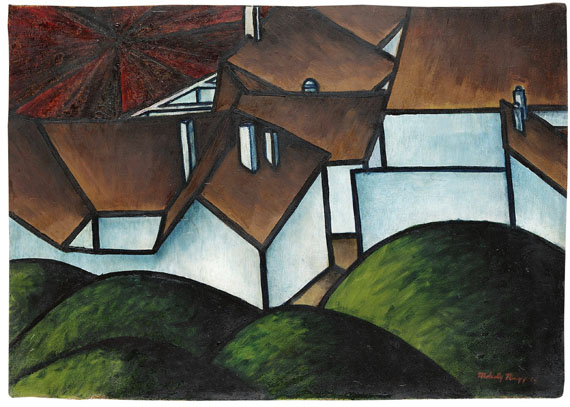
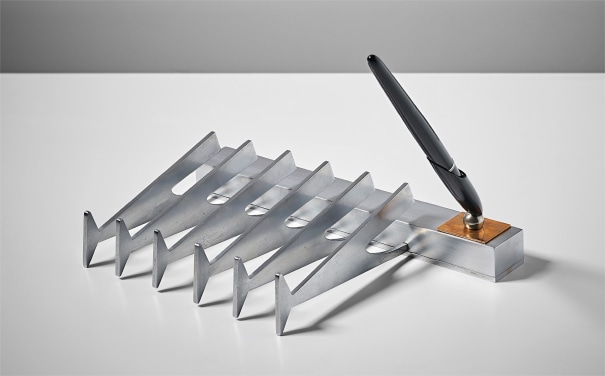
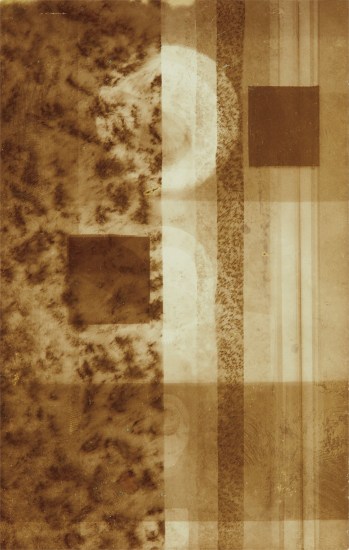

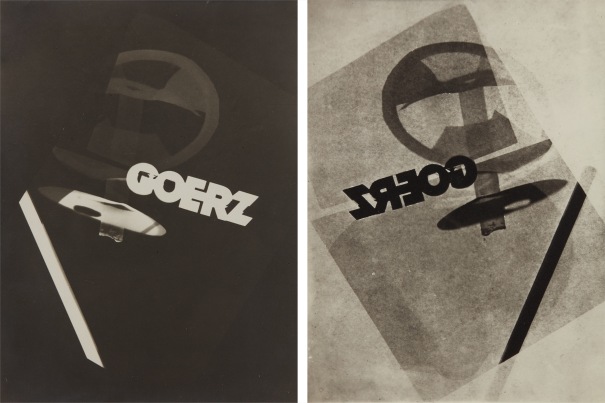
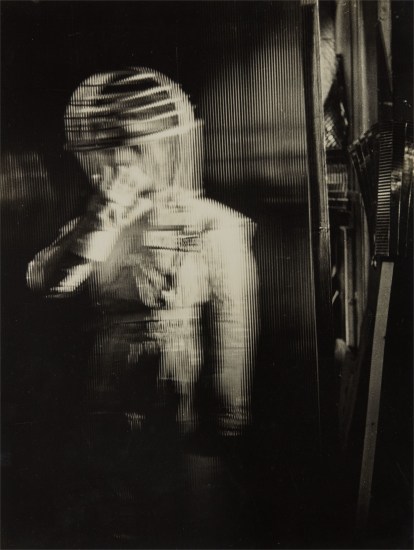

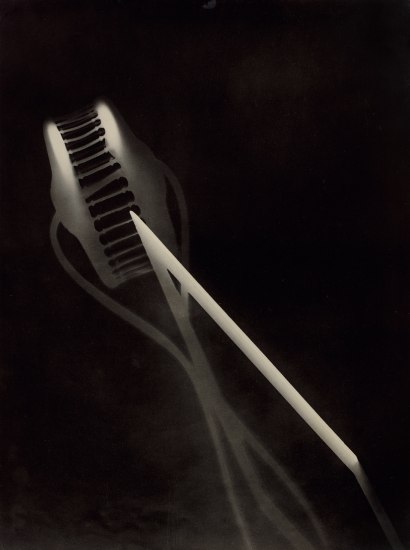

.jpg)
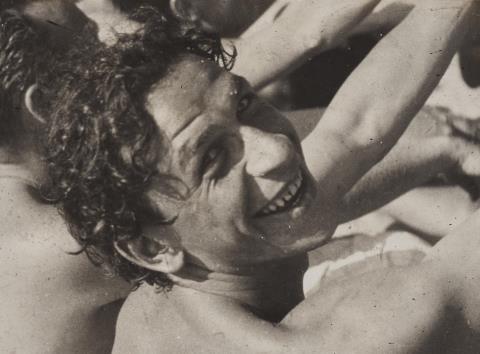


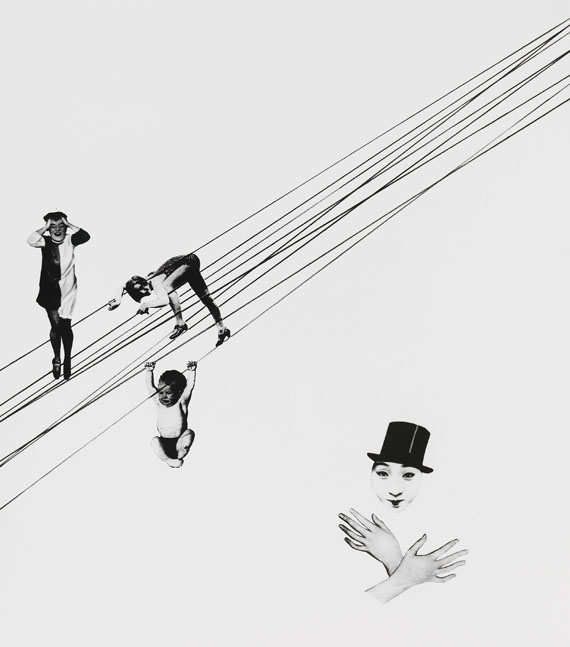
Try LotSearch and its premium features for 7 days - without any costs!
Be notified automatically about new items in upcoming auctions.
Create an alert